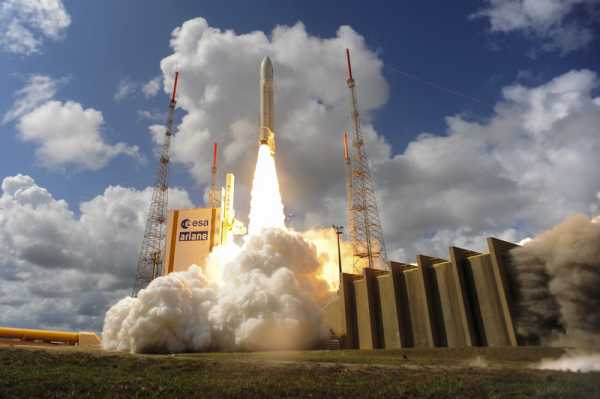
The European Space Agency is also looking to advance the space sustainability agenda (Photo: ESA–Stephane Corvaja, 2016)
In a complex, changing, and increasingly contested space environment, nations must adopt a more comprehensive approach to space governance. Indeed, the intersection of commercial interests, technological advancements, and national security imperatives in our orbits presents new challenges.
Russia’s war of aggression against Ukraine has underscored the dual nature of space technologies, which now serve both civilian and critical military purposes with increasing frequency.
The conflict has seen earth observation satellites, previously dedicated to monitoring environmental phenomena, now being employed by both Russian and Ukrainian forces for reconnaissance and intelligence-gathering in the conflict.
As a result, the protection and resilience of space-based capabilities have become critical. Countries across the world are taking note. France’s recent AsterX military exercise is the latest example of the ongoing efforts to bolster space capabilities and safeguard the integrity of assets.
The European drive for regulating space
Despite an exponential increase in activities in this domain, space remains lightly regulated. In response, there is now an evident push for regional powers such as the EU to legislate and protect sovereign access to space through what could be described as a dual-track approach to safety (sustainability concerns) and security (defence-related concerns).
The EU has been reassessing its stance on space as a military domain. The 2023 Space Strategy for Security and Defence emphasises the bloc’s growing reliance on space in this context.
Additionally, the first-ever European Defence Industrial Strategy (EDIS) foresees the implementation of key projects, including Space Domain Awareness, slated for completion or advancement by 2035.
In parallel, the EU is promoting a safe and sustainable use of orbital resources through its approach to Space Traffic Management. The European Space Agency (ESA) is also looking to advance the space sustainability agenda by developing its Zero Debris Charter.
These efforts are crucial but often fail to observe the critical link between promoting space safety and ensuring overall security. In the space domain, the pressing challenge of orbital congestion necessitates the recalibration of strategy.
Adapting space defence strategies
The state of the orbital environment is now utterly different than when the first outer space treaty entered into force 60 years ago. With the emergence of the New Space industry, the number of satellites orbiting earth has surged significantly, increasing from approximately 500 to 8,000 over the past twenty-five years. As a result of this trend, the amount of trackable and non-trackable debris has skyrocketed, creating a highly fragile environment for the safe conduct of all space activities.
Orbital congestion raises the risk of collisions, posing a direct threat to space systems, including defence. Despite advances in terms of space surveillance and tracking technologies, not all debris can be monitored and therefore avoided.
Furthermore, debris resulting from kinetic and other adversarial attacks contributes to the fragility of the entire orbital environment, while often being overlooked in space defence strategies. Recent Russian warnings about nuclear space weapon development highlight broader safety concerns.
The use of a nuclear weapon in orbit would result in a substantial debris cloud, rendering nearby orbits likely impractical for use. While major spacefaring nations like Russia are unlikely to jeopardise their space assets, other nations like Iran might seek to level the playing field.
Sign up for EUobserver’s daily newsletter
All the stories we publish, sent at 7.30 AM.
By signing up, you agree to our Terms of Use and Privacy Policy.
Current strategies inaccurately differentiate between safety and security concerns. Therefore, the full range of threats weighing on the integrity of space assets is hardly identified under a single common strategy and is thus difficult to address.
EU-Nato cooperation
Future laws and strategies must provide a comprehensive understanding of the challenges to our sovereign access to space. With the ability to set binding requirements to regulate access to its internal market, the EU is in a unique position to foster more sustainable behaviours.
Only a few weeks away from the publication of the first-ever proposal for a European Union Space Law (EUSL), the block must acknowledge the interdependencies between space safety and security.
Moving forward and expanding on the model of French AsterX, tabletop military exercises with like-minded partners should also be encouraged. The scenarios to be developed must consider safety risks as prime threats to military operations. Moreover, facilitating information-sharing is critical to reinforcing our common security under the EU-Nato cooperation.
Source: euobserver.com